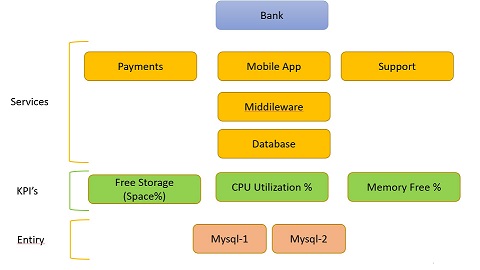MyObservability
Introduction
Service Insights in IT Service Intelligence (ITSI) represents the mapping and monitoring of business and technical services within your organization. The information derived from Service Insights helps you better detect problems, simplify investigations, triage issues, and accelerate resolutions.
ITSI Components
- Services
- Service health scores
- KPIs
- Deep dives
- Entities
- Adaptive thresholds
- Anomaly detection
- Glass Tables

Glass tables: Glass tables are custom visualizations that help you monitor KPIs and service health scores.
Services: A service is a logical mapping of IT objects that applies to your business goals. Business services & Technical Services are 2 types. Some services might have dependencies on other services. Services contain KPIs (Key Performance Indicators), which make it possible to monitor service health, perform root cause analysis, receive alerts.
Service health scores: A service’s health score is a weighted average of the severity values of a service’s KPIs and dependencies. Service Insights uses the health score to assign the service a severity level and color in the Service Analyzer and in glass tables.
KPIs: A KPI (Key Performance Indicator) is a recurring saved search that returns the value of a performance metric.
Deep Dives: Deep dives display KPIs search results over time and help you visually correlate the root cause of search results.
Entities: An entity is an IT infrastructure component that requires management to deliver an IT service. Entities are usually hosts, but can also be items as diverse as cloud or virtual resources, network devices, applications, users.
Adaptive thresholds: Adaptive thresholds are a type of threshold configuration for a KPI that’s populated based on a statistical distribution of historical KPI data. The adaptive thresholds automatically recalculate on a nightly basis so that slow changes in behavior don’t trigger false alerts.
Anomaly detection: Anomaly detection generates notable events when a KPI IT Service Intelligence (ITSI) deviates from an expected pattern. These notable events represent detected anomalies for service-level (trending) and entity-level (cohesive) KPI data. The algorithms learn KPI patterns continuously in real time and detect when a KPI departs from its own historical behavior.
Next Chapter: Services